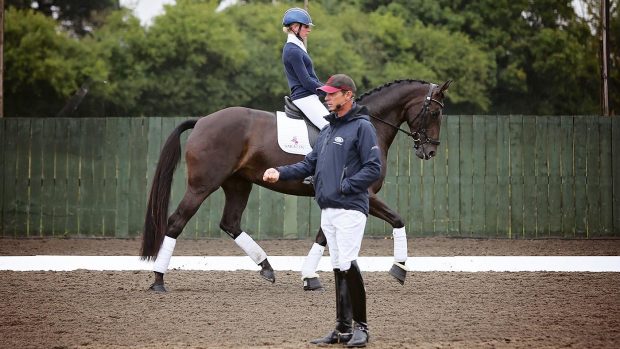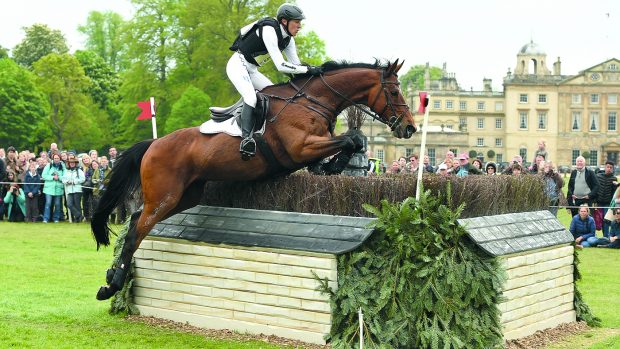Dressage rider and trainer Keith Robertson explains how to perfect your halt, which can be an easy way to gather important marks.
Session 1: Achieving a straight, square halt
In prelim 7, for example, you are asked to halt at G from trot. Many riders stop too early — either because they’re unsure of the position of G or their horse predicts halting at X — or they perform a poor halt. The halt happens just before the judge fills in your collective marks, which are usually worth double, so this is an influential moment. Success in this test depends on nailing this movement.
Remember you want your body — not the horse’s nose — in line with the marker. A good judge will reward quality of the halt over accuracy of the positioning, but they’d prefer to see both. Once halted, the horse has to stay still and balanced.
A lot of halts are ruined because the rider keeps on at the horse to square up. Judges don’t want to see you pulling and kicking. If the halt isn’t square, leave it — it’s preferable to be immobile than fidgeting. If no immobility is shown, you’re likely to get a low mark.
To try at home…
Practise halting on the track so you can use the fence line to teach the horse to stay straight. Begin riding a progressive transition, through a few steps of walk, so the horse is less likely to swing his quarters out.
Then practise riding this evenly on the centre line — avoid twisting and ensure equal pressure through your legs, seat bones and hands. It’s important to keep straight, even if the halt doesn’t end up square.
With a fidgety horse that is reluctant to stand, avoid riding abruptly to halt — instead practise asking for trot to walk to trot on the centre line. This will give the horse confidence and help develop softness in his back and neck.
As your horse gets straighter, think about making him square. One of the most important ingredients for a square halt is control over the horse’s steps.
From trot, ride a downward transition to halt, but then ask the horse to creep forward with tiny walk steps, controlling each one with your seat and leg. The horse mustn’t feel trapped, so keep your hands soft and forward.
Once you can influence his steps with your seat and leg aids, keep asking for subtle adjustments until his hindlegs come under him and he is square. Repetition is key — if you always insist on this it will become the norm.
If this isn’t working, try going back to basics. Take the problem out of the arena and spend time halting anywhere and everywhere, making sure that every single time your horse stands still, it is on your terms. Pretty soon, he’ll get the idea. You will get there eventually, but it is a case of quiet perseverance and practice.
Session 2: Practise the whole test
It’s now time to practise riding the test as a whole, but first watch this test riding video with top judge Isobel Wessels.
If you can not see the video player above, please click here
At this stage, focus on ensuring you are comfortable with the following:
- Transitions on a 20m circle
- Medium walk (double score)
- Halting from trot
Horse & Hound magazine, out every Thursday, is packed with all the latest news and reports, as well as interviews, specials, nostalgia, vet and training advice. Find out more about getting the magazine delivered to your door every week.




